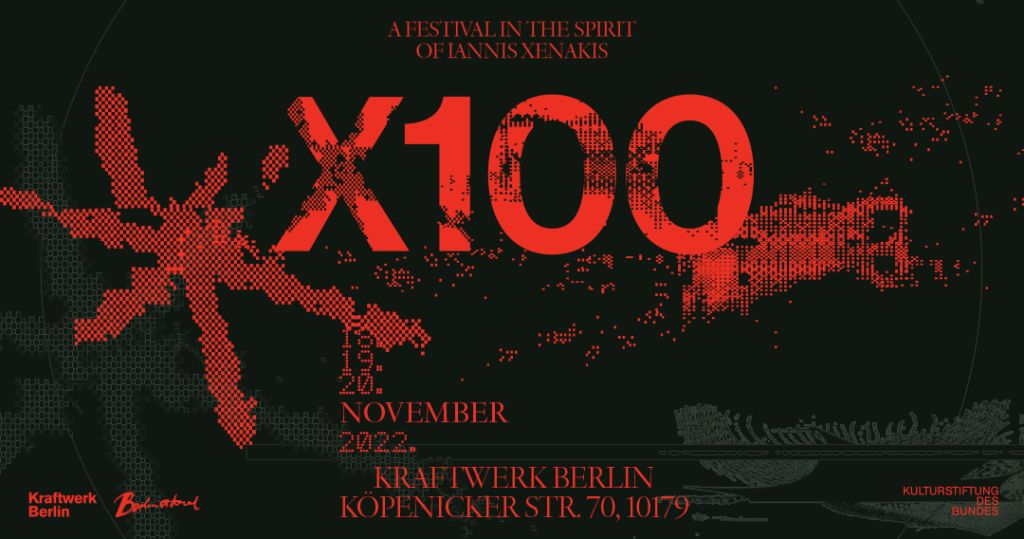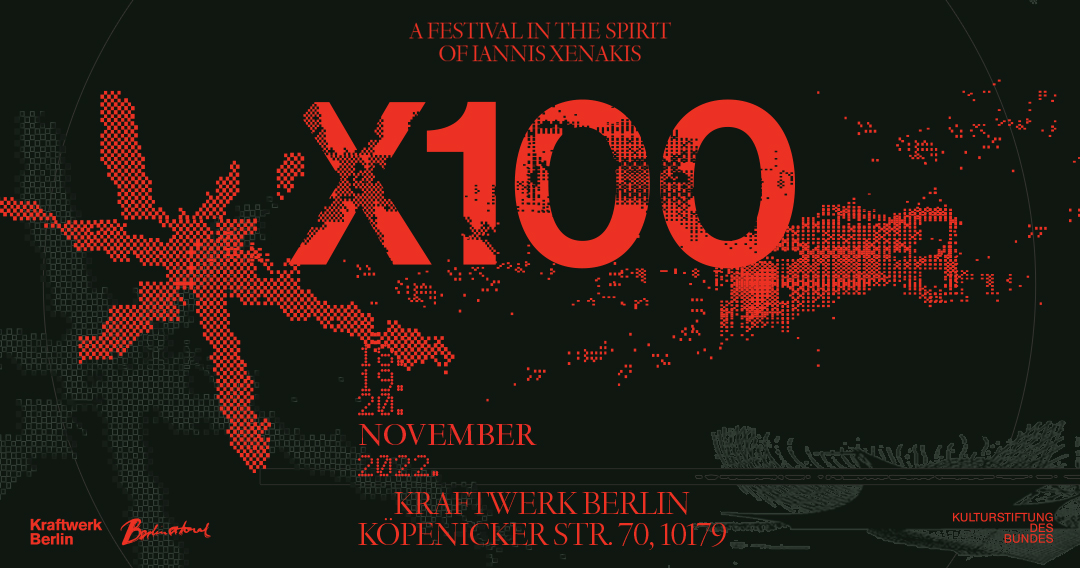Text by Agata Kik

Berlin Atonal, the annual festival originating in the German capital’s electronic experimental music art scene of the 80s, having relaunched its new version in 2013, is presenting a special one-off edition titled X100, taking place on the 18, 19 and 20th of November this year, dedicated to Iannis Xenakis.
One hundred years after his birth, the whole happening is dedicated to the Romanian-born Greek, French avant-garde composer, architect, and mathematician Iannis Xenakis, who pioneered applying mathematical models to music, known as the designer of the UPIC, a computerised system with a graphical approach to musical composition.
The festival preview note boldly states: ‘(…) the music of this prolific utopianist continues to challenge modes of temporal existence and how music can be imagined and shared.’ Famous for its trendsetting newly commissioned works and debut performances, this year’s Atonal’s special edition is gathering again the most innovative experimental sound artists and electronic music performances, which will underscore Xenkais’s legacy in the XXIst century.
Some highlights include the launch of Pan Dajin’s new opera exploring the potential of architectural space as a music instrument or the first-ever collaboration between Puce Mary and Bill Kouligas, originally commissioned by X100 to present their new work incorporating string glissandi and granular synthesis. Through the 8-speakers system, Kali Malone is uniquely showing “Living Torch”, an album the artist recently recorded at GRM studios formed by Pierre Schaeffer in 1951 in Paris.
Powell is also taking over the 8-channels sound scope and will diffuse the work titled a ƒolder (aƒ), a queer cacophonous collection of works of experimental film, texts, and other media. Alongside, Russell Haswell & Florian Hecker are performing one of their UPIC electroacoustic Diffusion Sessions, which are all based on their research at the Centre for Composition of Music Iannis Xenakis (CCMIX) in Paris.
Among discursive events and workshops planned besides the main performance programme, many of Xenakis’ pieces will be diffused at X100 by Madrid-based composer Sergio Luque. Persepolis (1971), for example, was originally commissioned for the Shiraz Festival in Iran and, as one of Xenakis’s polytope works, was spread across the ancient Persian capital with six designated listening zones, where in each eight speakers were playing different tracks of the sound piece.
Or else, the electroacoustic genius jewel of sonic study into texture, Concret PH (1958), was made from recordings of burning charcoal and first played from 425 loudspeakers at the entrance to the Philips Pavilion, designed by Xenakis himself, while working with Le Corbusier. Acoustic pieces like Ittidra (1996) will be performed by Solistenensemble Kaleidoskop or Kottos (1977) for solo cello by Michael Rauter (Solistenensemble Kaleidoskop) or Mikka (1971) for a solo violin by Diana Mos.
Nuits (1968), an acapella piece for twelve voices, will be staged by the Berlin-based contemporary vocal ensemble PHØNIX16. One of Xenakis’ longest instrumental works for percussion, Pléïades (1979), incorporating a specially designed microtonal percussion instrument called the sixxen, along with other metal and wood instruments, will be reenacted by the Christian Benning Percussion Group.
X100 is coming back to Berlin Atonal’s hub at the heart of the city in Kraftwerk. Another one of those imposing disused buildings in Berlin (partly reopened as the famous techno club Tresor), the industrial interiors of which, after the former power station supplying energy to East German regions of the city, remember the times of the Berlin Wall.
They will pose a unique reminder of Iannis Xenakis’s fascination with site-specificity and designing spaces to be integrated with specific music compositions and performances, which the artists at X100 will emphasise by diffusing their music pieces while playing with the space and sound sculpturality.
More info and tickets here.






